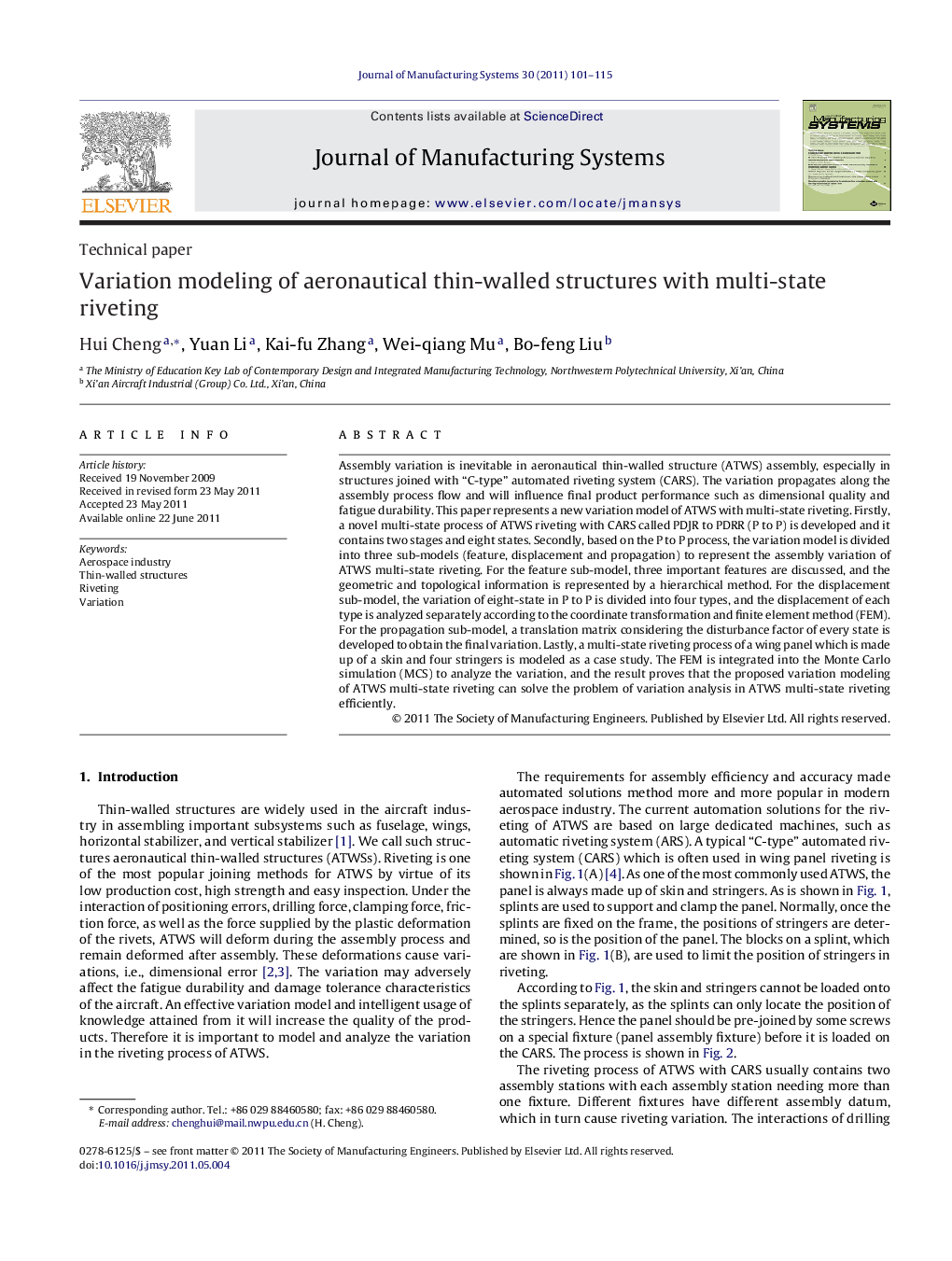| Article ID | Journal | Published Year | Pages | File Type |
|---|---|---|---|---|
| 1697758 | Journal of Manufacturing Systems | 2011 | 15 Pages |
Abstract
Assembly variation is inevitable in aeronautical thin-walled structure (ATWS) assembly, especially in structures joined with “C-type” automated riveting system (CARS). The variation propagates along the assembly process flow and will influence final product performance such as dimensional quality and fatigue durability. This paper represents a new variation model of ATWS with multi-state riveting. Firstly, a novel multi-state process of ATWS riveting with CARS called PDJR to PDRR (P to P) is developed and it contains two stages and eight states. Secondly, based on the P to P process, the variation model is divided into three sub-models (feature, displacement and propagation) to represent the assembly variation of ATWS multi-state riveting. For the feature sub-model, three important features are discussed, and the geometric and topological information is represented by a hierarchical method. For the displacement sub-model, the variation of eight-state in P to P is divided into four types, and the displacement of each type is analyzed separately according to the coordinate transformation and finite element method (FEM). For the propagation sub-model, a translation matrix considering the disturbance factor of every state is developed to obtain the final variation. Lastly, a multi-state riveting process of a wing panel which is made up of a skin and four stringers is modeled as a case study. The FEM is integrated into the Monte Carlo simulation (MCS) to analyze the variation, and the result proves that the proposed variation modeling of ATWS multi-state riveting can solve the problem of variation analysis in ATWS multi-state riveting efficiently.
Related Topics
Physical Sciences and Engineering
Engineering
Control and Systems Engineering
Authors
Hui Cheng, Yuan Li, Kai-fu Zhang, Wei-qiang Mu, Bo-feng Liu,
